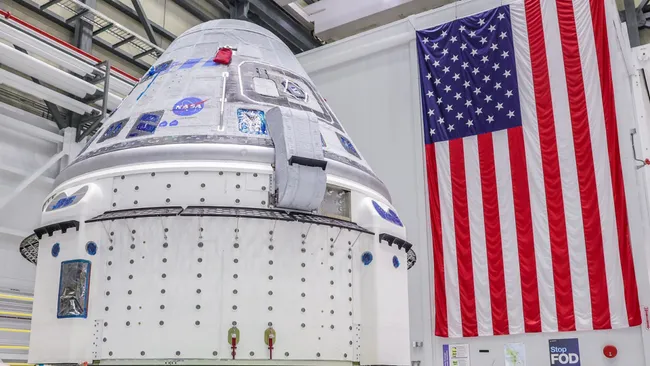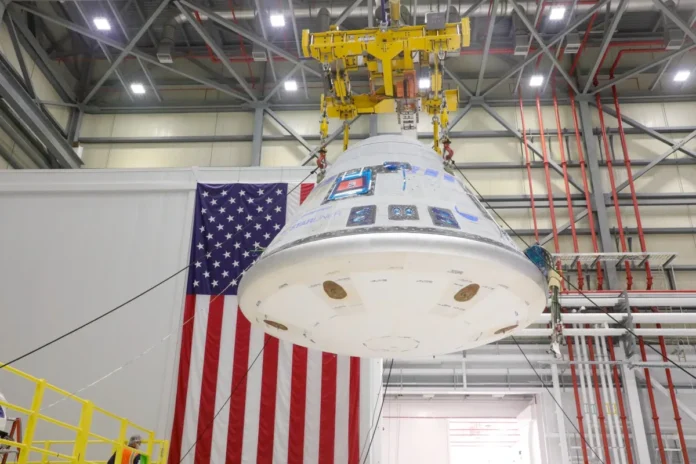After years of development and testing, Starliner’s First Crewed Mission of Boeing’s capsule has been pushed back slightly. Originally targeted for late April, NASA and Boeing are now aiming for an early May launch. This adjustment ensures both teams have ample time to complete all necessary preparations and verification work for a safe and successful mission.
A Long-Awaited Journey
Starliner’s first crewed mission, known as Crew Flight Test (CFT), represents a critical milestone in NASA’s Commercial Crew Program. This program, established after the retirement of the Space Shuttle fleet in 2011, partners with private companies to ferry astronauts to and from the International Space Station (ISS). SpaceX’s Crew Dragon capsule has already been performing this task successfully for over two years.
The CFT mission will carry two NASA astronauts on a multi-day mission to the ISS. Once docked, the astronauts will conduct a series of tests and checkouts of the Starliner systems, ensuring its functionality and safety for future operational missions.
Reasons for the Delay
While a few weeks might seem like a minor delay, meticulous planning and preparation are paramount for spaceflight. According to NASA officials, the primary reason for the pushback concerns scheduling considerations at the ISS. With Axiom Space’s Ax-2 mission, a private astronaut mission using SpaceX’s Crew Dragon, slated for early May, a slight adjustment to Starliner’s launch date avoids potential congestion at the space station. This ensures both missions have sufficient time and resources for smooth operation.
Technical Considerations and the Path Forward

The delay also provides additional time for Boeing and NASA to finalize technical checks and verifications. Starliner’s path to this point hasn’t been entirely smooth. In 2019, the spacecraft experienced software glitches during its uncrewed Orbital Flight Test (OFT-1) mission, preventing it from docking with the ISS. The subsequent uncrewed OFT-2 mission in May 2022 successfully docked and completed its planned objectives, demonstrating significant progress. However, the additional time allows for a more thorough review of all systems and procedures, minimizing any potential risks during the CFT mission.
ALSO READ: SpaceX Launches Crew-8 to the International Space Station (Video)
Starliner’s Unique Capabilities
While both SpaceX’s Crew Dragon and Boeing’s Starliner serve the same core purpose of transporting astronauts, there are some key differences. Starliner boasts a larger cabin, offering more crew space and comfort for longer duration missions. Additionally, it utilizes a unique landing system with airbags, designed for a gentler touchdown on land compared to Crew Dragon’s ocean splashdown.
The success of the CFT mission will pave the way for Starliner’s certification for regular crew rotation flights to the ISS. This will provide NASA with greater flexibility and redundancy in its human spaceflight operations, fostering a more robust and competitive commercial space transportation industry.
Looking Ahead: A Brighter Future for Commercial Spaceflight
The upcoming Starliner launch signifies a significant step forward in the public-private partnership approach to space exploration. With both SpaceX and Boeing offering crew transportation capabilities, NASA can focus its resources on developing the next generation of spacecraft and deep space exploration endeavors. The additional competition within the commercial space sector is likely to drive further innovation and cost efficiency in space travel.
While the launch date has shifted slightly, the collective expertise of NASA and Boeing assures a continued commitment to safety and mission success. The upcoming Starliner mission holds immense promise for the future of human spaceflight, marking a new chapter in international collaboration and space exploration.
